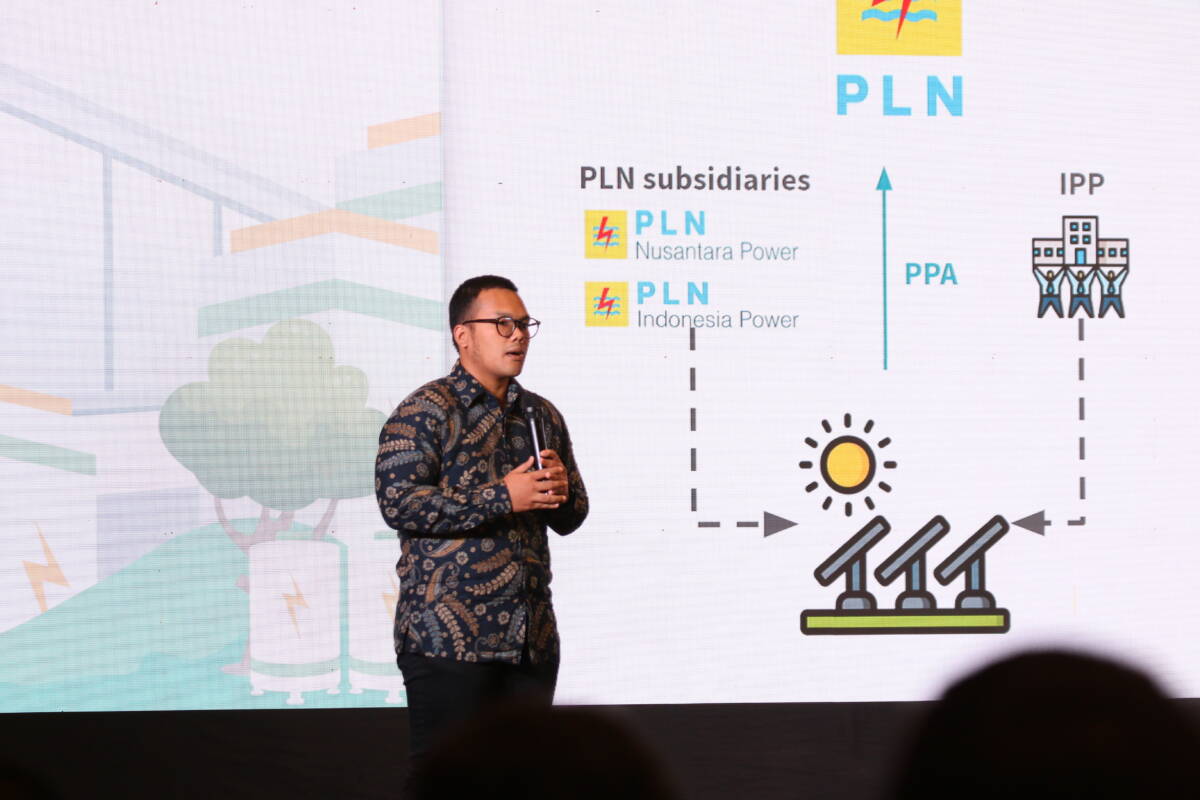Jakarta, October 15, 2024 – The Institute for Essential Services Reform (IESR), a leading energy and environment think tank, has released two new studies on solar energy development and an assessment of energy storage systems in Indonesia.
The Indonesia Solar Energy Outlook (ISEO) 2025 report highlights that solar energy growth in Indonesia has been slow compared to the targets outlined in PLN’s National Energy General Plan and Electricity Supply Business Plan, with a total installed capacity of 718 MW as of August 2024. However, there is significant potential to increase installed capacity and attract investment in solar energy, as the government and PLN plan to develop a total of 17 GW of solar energy.
In addition, IESR’s report Powering the Future notes that the country is still in the early stages of adopting energy storage systems (ESS). IESR emphasized that a solid understanding and strong commitment from policymakers and energy planners regarding the potential and benefits of solar energy and ESS are essential prerequisites for accelerating their growth in Indonesia’s electricity system.
IESR Executive Director Fabby Tumiwa explained that Indonesia needs to achieve 77 GW of solar PV capacity by 2030, equivalent to 9-15 GW per year between 2024 and 2030, in order to align with the global target of tripling renewable capacity by 2030 to limit global temperature rise to 1.5°C, as per the Paris Agreement. He highlighted that since 2022, the addition of solar energy capacity has been slow, dominated by utility-scale solar PV (208 MW), followed by rooftop solar PV (143 MW), and captive on-site solar PV (100 MW).
Fabby urges the government to raise renewable energy targets for 2025 and 2030, positioning solar energy as the backbone of the energy transition and accelerating investments in solar PV across various scales. He also emphasizes that an ambitious increase in the renewable energy mix must be aligned with a more aggressive emission reduction commitment in the Second Nationally Determined Contribution (SNDC).
“The government needs to be more ambitious in adding solar energy capacity by 2030. The current solar capacity addition plan is still far short of what Indonesia needs to achieve in order to meet the Paris Agreement targets. While it’s true that solar PV faces intermittency challenges, using this as a reason to limit its development is not justified. Many countries have solar PV penetration above ten percent of their total power capacity without experiencing electricity supply issues or blackouts. Intermittency can be addressed by integrating energy storage systems into the electricity grid,” Fabby said at the launch of the two studies on Tuesday (October 15, 2024).
Alvin Putra Sisdwinugraha, Lead Author of ISEO 2025 and IESR’s Electricity and Renewable Energy Analyst, revealed that solar energy investment in Indonesia has doubled, from USD 68 million in 2021 to USD 134 million in 2023. He noted that regulatory stability and the availability of a solar market in Indonesia will be critical factors in attracting further investment. He stated that the planned solar energy project, with a capacity of nearly 17 GW, could serve as a foundation for developing strategies and investments in this sector.
“The quota policy for rooftop solar PV and the relaxation of the local content requirement (TKDN) can significantly boost domestic demand. However, strong signals from the government, such as incentives and clearly defined projects, are essential. The year 2025 will be a pivotal year for evaluating the effectiveness of existing solar energy regulations and ensuring the infrastructure is in place to support large-scale solar energy adoption,” Alvin stated.
IESR highlights that positive trends in solar energy investment are also evident in the solar module supply chain. This is linked to strategic renewable energy export projects between Singapore and Indonesia. As of this report, the total announced solar module production capacity has reached 19 GW per year, with 200,000 tons of solar-grade silicon and 17 GW of solar cell production annually.
In its Powering the Future study, IESR emphasized that energy storage is crucial for transforming Indonesia’s power sector to achieve net zero emissions (NZE) by 2060 or earlier. With projections of solar and wind power making up 77 percent of total installed generation capacity (421 GW of solar PV and 94 GW of wind) by 2060, at least 60.2 GW of energy storage will be required. IESR notes that Indonesia is still in the early stages of energy storage adoption and stresses the need for a comprehensive strategy to accelerate the development of an energy storage ecosystem.
His Muhammad Bintang, Author of Powering the Future and Coordinator of the Energy Resources and Electricity Research Group, IESR, emphasized that energy storage remains a challenge as renewable energy development, particularly Variable Renewable Energy, progresses slowly.
“Currently, there is no large-scale energy storage system operational in Indonesia. The development of small-scale energy storage technology is being led by the private sector, followed by state utility companies. Conversely, the establishment of an electricity export scheme to Singapore could accelerate the implementation of Energy Storage Systems (ESS) and Battery Energy Storage Systems (BESS) in Indonesia. This scheme is projected to increase the installed energy storage capacity in Indonesia by up to 1,000 times, with a total capacity expected to reach 33.7 GWh by 2030,” Bintang stated.
IESR urges the Indonesian government to accelerate the adoption of energy storage, among others, by first improving the regulatory framework and establishing legal certainty to provide adequate compensation for ESS developers, reduce development risks, and boost investor confidence. Second, developing infrastructure and technology through the implementation of pilot projects to test various ESS technology options and by building a storage technology ecosystem, along with a research and development roadmap. Third, the economics of energy storage projects should be enhanced to make them more viable. Fourth, IESR stresses the importance of ensuring responsible mining practices for mineral extraction and preparing for battery recycling and reuse.

